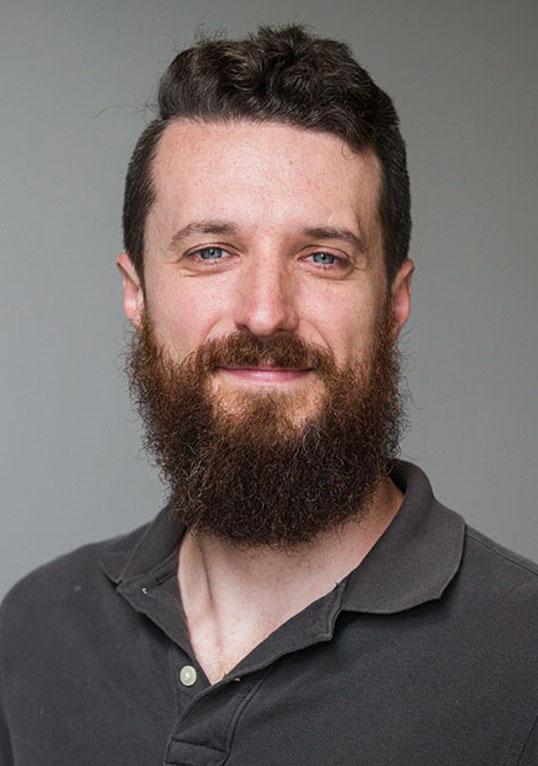Although some of the data has since been reinstated, McAndrew said he still feels uncertainty as a researcher. In the seven years since he started flu forecasting, it’s the first time McAndrew has seen public information pulled back by the federal government.
“Knowing these sorts of things can happen makes me anxious about what could potentially happen in the future in the U.S.,” he said. “The fact that it happened and some stuff has been coming back online makes me wonder how we can better prepare if it happens again. We shouldn’t just ignore what happened in January and pretend it will never happen again.”
What’s in a Flu Forecast?
Researchers such as McAndrew rely on the data to provide real-time and future insights about the influenza season for public health officials. The forecasts help predict the timing of peak influenza transmission, the number of overall cases and those requiring hospitalization. They also assess the effectiveness of preventative measures, guiding decisions on the optimal timing and locations for vaccine clinics and when to alert hospitals about the onset of the influenza season.
McAndrew and doctoral student Garrik Hoyt ’28 Ph.D. recently published a paper in The Lancet, a weekly peer-reviewed medical journal, titled “When Data Disappear: Public Health Pays As U.S. Policy Strays.” The article uses empirical data to demonstrate how the rollback of public health datasets diminishes the ability to forecast flu-related hospitalizations, and it illustrates the broader risks of limiting data access during public health crises.
Currently, there are no statutes mandating the collection or reporting of crucial epidemiological data sources. McAndrew and Hoyt began working on the paper in February, looking at stats from October 2023 — the start of the official 2023-2024 influenza season. The paper was published May 21, 2025.
“I think the biggest reason people should care about this is that the datasets that were produced by the government allow transparent analysis to be conducted, and transparency tends to lead to better decisions,” McAndrew said. “Having open, transparent datasets like this allows for better public health decision making, which leads to better public health.”
The Data-Rich Model Versus The Data-Poor Model
To show how data surveillance enhances public health practice, McAndrew and Hoyt’s paper analyzed stats from seven U.S. government-maintained sources associated with seasonal influenza. They created two models: A data-rich model incorporating stats from all seven government sources, and a model using a single data source on hospitalizations and the census. The second model represented the minimal required information to produce a forecast of influenza hospitalizations.
The data-rich model generated reliable forecasts useful for public health decision making, whereas predictions using the second model were highly uncertain, rendering them impractical. The findings show that a plan should be developed to safeguard public health data, according to the report.
“If the federal government were to cease the collection or maintenance of public health datasets … we might consequently witness a drastic increase in influenza-related morbidity and mortality,” the report says. “An average of 400,000 hospitalizations and 20,000 deaths occur during a typical influenza season in the USA, with an estimated direct-medical cost of approximately $10 billion.”
In addition, the withholding of previously public data comes at a time when the U.S. is seeing an outbreak of avian flu, also known as H5N1. While it primarily infects birds, it can also infect humans and other animals.
“H5N1 is no joke. If the current administration is restricting or pausing the dissemination of data related to that, then officials at the state level won’t be able to prepare or react,” McAndrew said. “It has the potential to have dire consequences, in the U.S. and globally.”
Protecting the Data
McAndrew believes those in academia, industry, local government and health should expand efforts to ensure local control over government-hosted datasets. Cost would be marginal — the greater challenge would be supporting and coordinating the data collection process.
“We advocate for a strategic national plan, informed by diverse stakeholders, including those who generate, store, use and maintain public health data and are involved in data infrastructure,” the report says. “Representatives from private industry and academia should be included to develop a robust and feasible plan.”
It’s about more than just flu forecasting, said Dominic Packer, Lehigh’s associate vice provost for research.
“The United States government has been so fundamentally important in collecting and making available vast amounts of data that impact any number of things, whether it’s health, the economy, education, how well students are doing in school,” Packer said. “Federal agencies are pulling back in many cases, either because they are losing the relevant staff or they're losing the funding to collect and establish these kind of data, and it will have an impact on researchers and universities such as Lehigh.”
When data began disappearing from federal websites, Lehigh researchers, particularly those in the College of Health, acted quickly to archive what remaining information they could, Packer said.
“There are a lot of opinion pieces out there currently about how various actions by the executive branch will affect research, the economy and society in different ways. What I like about Tom’s article is that it goes beyond opinion to show empirically, by analyzing data, what the effects are likely to be,” Packer said. “Everyone is entitled to their opinion, but at the end of the day, there are some facts, and research helps us get to those facts. Researchers apply methods that rigorously work through things to get you closer to reality.”
The Human Aspect of Research
Hoyt, who is studying computer science, is preparing a follow-up paper to The Lancet article, focusing on the effects of reducing the number of public health officials. Since the beginning of the year, thousands of federal employees from the Department of Health and Human Services have been terminated from their positions. Recently, a fraction of CDC employees had their jobs reinstated, according to news reports, but that figure is still far less than those who were originally let go.
“We want to show the value of having expert opinion and emphasize the danger of reducing the amount of expertise,” Hoyt said.
The follow-up paper examines data on expert opinions collected on the upcoming flu season, and it uses those opinions to build a model of the season. The less opinions available, the more biased the data, Hoyt explained. For example, if you’re only keeping senior officials, you lose the expertise and opinion of different generations. Hoyt hopes to publish his findings later this summer.
Hoyt’s interest in flu forecasting is personal. He is inspired by his dad who has genetic diabetes and is more susceptible to complications of the flu. In the future, Hoyt hopes to become a professor and inspire other students to pursue data science.
“I like that this work has a real-world application. I can very easily think of people I know who have had really bad flu. We live in a community with a lot of elderly people and those who have chronic health conditions. Flu is a much larger threat to them than to someone my age,” Hoyt said. “I just really like the human aspect of doing research and having someone benefit from it.”
Lehigh has been named an R1 research university by the Carnegie Classification of Institutions of Higher Education. Universities with this designation conduct the highest level of research activity within the Carnegie Classification. Lehigh is the only university in the Lehigh Valley to have this designation, and one of seven in Pennsylvania. Learn more.






